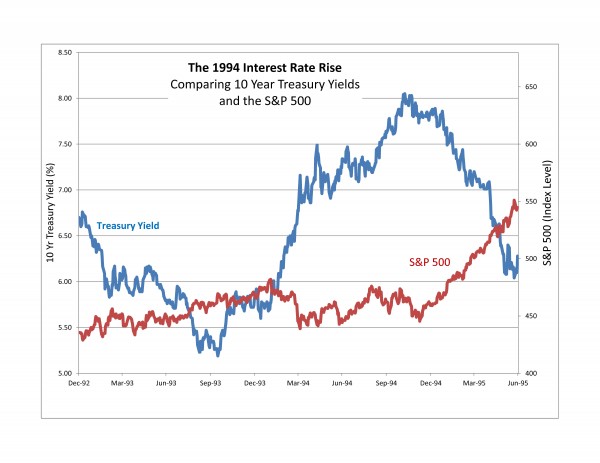Duration is everything in a rising interest rate market.
Short term municipal bonds have fared better than their longer term counterparts as money moves out of bond funds.
The S&P Short Term AMT-Free Municipal Bond Index has seen its weighted average yield remain fairly steady and has recorded a modestly down June so far of -0.11%.
One year municipal bonds tracked in the S&P AMT-Free Muni Series 2014 Index have seen a positive return of 0.02% with its yield dropping by 1bp month to date.
Five year bonds tracked in the S&P AMT-Free Muni Series 2018 Index have seen yields rise by 17bps pushing prices down and recording a negative 0.7% return month to date.
Ten Year bonds tracked in the S&P AMT-Free Muni Series 2023 Index have returned a negative 1.81% as its yield has risen by 21bps. The yield of these non-callable, investment grade bonds is 2.85%. Using a tax rate of 35%, the Taxable Equivalent Yield of these investment grade municipal bonds has moved to 4.38%.
Longer municipal bonds, in the 20 year and longer range, are tracked in the S&P 20+ Year Municipal Bond Index. That index is down 2.4% in June so far with yields rising by 45bps since May.
For June, Puerto Rico has moved the most of any state or territory down 2.43%. The longer duration characteristics of bonds from Puerto Rico tracked in the S&P Municipal Bond Puerto Rico Index isn’t helping as interest rates rise.
High yield municipal bonds are off 2.12% for June so far. Helping to push down the high yield market is the long duration tobacco settlement bond sector, the S&P Municipal Bond Tobacco Index is down 4.32% month to date. (In comparison, the S&P U.S. Issued High Yield Corporate Bond Index is down 1.51% month to date)
The posts on this blog are opinions, not advice. Please read our Disclaimers.











































